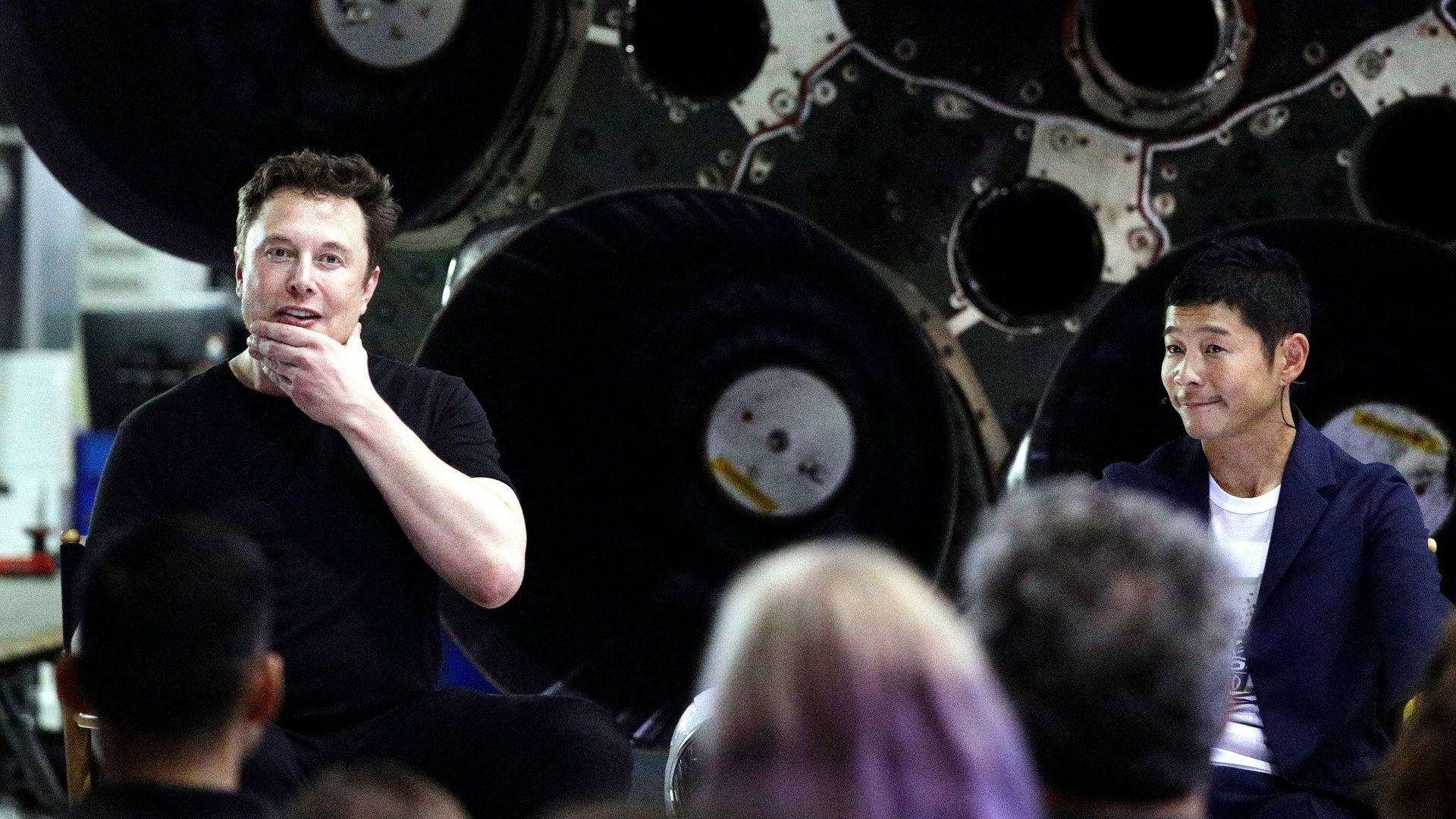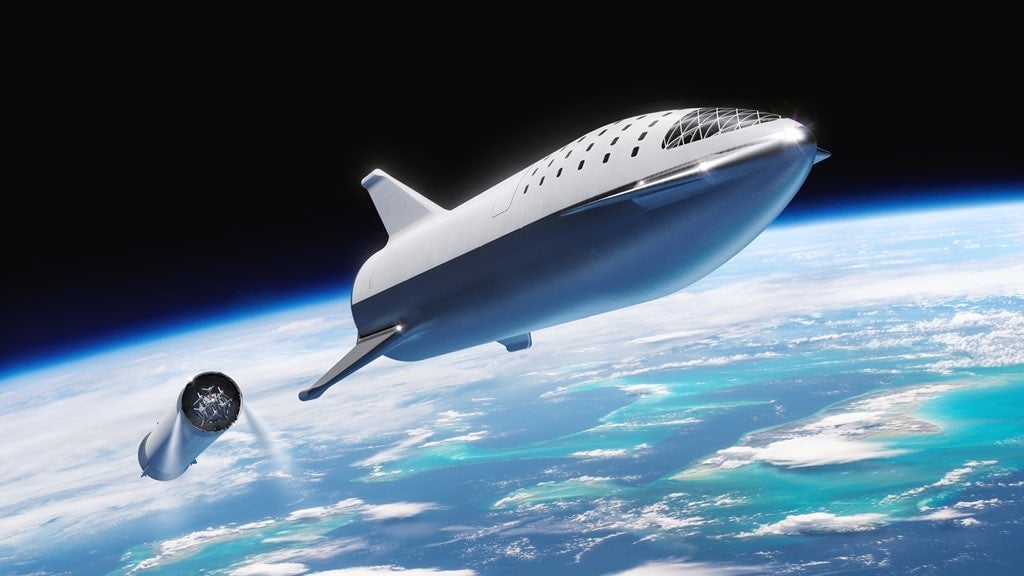Elon Musk says he will fly a Japanese billionaire around the moon
Elon Musk promised to send Yusaku Maezawa on a voyage around the moon in 2023, riding an enormous spacecraft that has yet to undergo its first test flight.


Elon Musk promised to send Yusaku Maezawa on a voyage around the moon in 2023, riding an enormous spacecraft that has yet to undergo its first test flight.
Maezawa will pay an undisclosed sum for the privilege of taking the first voyage into deep space operated by SpaceX, Musk’s innovative rocket-making firm. The choice was unveiled by Musk at an event at SpaceX’s headquarters in Hawthorne, California.
Maezawa is the billionaire entrepreneur behind the fashion retail website Zozo, which famously offers a custom-fit line of polka dot suits. The former skateboarder and rock drummer says that he is inspired by art and wants to bring eight artists with him on the voyage so that they may produce lunar-influenced work for a project he’s calling #dearMoon.
The mission is expected to launch in five years, but don’t hold your breath—SpaceX will face many challenges before then. Musk says just 5% of his company’s resources are dedicated to the BFR, or Big Falcon Rocket, which will be used for this trip, and that development will ultimately cost $5 billion.

Neither Musk nor Maezawa disclosed the cost of the trip, saying that the Japanese entrepreneur was paying a “material percentage” of the design and construction costs of the new rocket. The trip will take four to five days, and potentially bring the passengers within a 125 miles of the moon’s surface. Maezawa has yet to begin training for the mission, or determine how will choose the participating artists beyond a plan to approach his personal favorites.
”That’s the intent of BFR: to make people excited about the future,” Musk said.
In the near-term, the most relevant task for SpaceX will be proving that it can safely fly humans by carrying astronauts to the International Space Station on its Falcon 9 rocket and Dragon spacecraft, a task now expected to occur April 2019, two years past the original target date.
In 2017, SpaceX announced that two people had put down a “significant deposit” on a similar trip to orbit the moon and return to earth. Musk said that Maezawa was the depositor, and that the new rocket design would have more room to bring additional passengers on a comfortable journey.
Flying humans beyond the station’s position in low-earth orbit represents a new challenge for SpaceX. The voyage to the moon involves more exposure to cosmic radiation and a much higher-energy return trip through earth’s atmosphere. To meet this challenge, SpaceX will develop the BFR, the heir of the Falcon 9, SpaceX’s workhorse that pioneered reusable stages, and the Falcon Heavy, a more powerful rocket that debuted in January.
Musk first introduced BFR in 2016 as the heart of a transportation system that could take colonists to Mars for around $200,000 per person. The next year, Musk described an evolved version of the BFR that could be used to visit Mars—but also to visit the moon, a priority of the new Trump administration, or to carry passengers from point to point on earth far faster than any terrestrial airliner.
Now, the vehicle’s only firm mission is to carry Maezawa on the most expensive joy ride in history. Unlike past SpaceX vehicles, which were targeted to and often funded by specific customers, there are no early commitments for the BFR beyond this mission, though Musk has said in the past the vehicle would be capable of doing any of the work currently performed by the Falcon 9.
The 118 meter-long vehicle, which the company has begun to construct in a new facility near the Port of Los Angeles, could be the largest rocket ever flown. It includes a reusable booster and a reusable single-stage rocket with enough room for 100 passengers. The first stage will use 31 and the second stage seven of the company’s methane-powered Raptor engines. Those engines have been tested many times but never flown.
Musk has predicted that tests of the vehicle’s ability to do short hops and maneuver on its rocket engine could begin in 2019, which he reiterated today.
NASA is also eager to return to the moon. The US space agency is planning to work with private companies to send robotic explorers back to the lunar surface before sending astronauts to begin work on a platform orbiting the moon.
That human exploration side of the government’s plan relies on a rocket called the Space Launch System and the Orion spacecraft, which have been under construction by Boeing and Lockheed in various forms since 2006. Those vehicles are expected to make their first test flight in 2020.
There are few regulations governing private companies who wish to transport humans into space, although the US government must ascertain that any launches from its territories will not endanger other space activities. For now, any passengers will be able to sign a waiver—and a check—to start their countdown.
Musk even joked that he might join Maezawa on the inaugural tourism mission.
”Maybe we’ll both be on it,” he mused as Maezawa said “yes, yes” and SpaceX employees cheered.